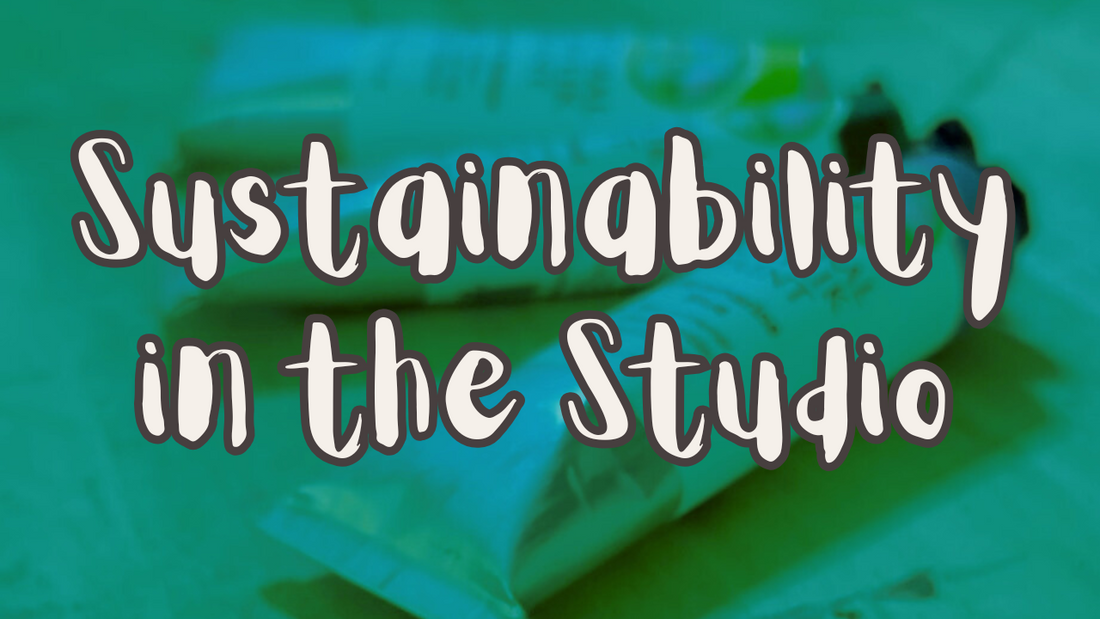
Sustainability in the Studio: Comparing Oil, Acrylic, and Watercolour Paints
Share
As artists, we’re deeply connected to the world around us. Our work often draws from nature, memory, and place—so it’s only natural to reflect on how our materials impact the environment. While creativity knows no bounds, our tools come with environmental footprints worth understanding.
In this post, I’m diving into the sustainability of oil, acrylic, and watercolour paints, to help both artists and art enthusiasts better understand one aspect of the many considerations that go onto creating artwork.
Oil Paints: Timeless but Often Toxic
Pros:
- Oil paints have been used for centuries and are made primarily from natural pigments and linseed or walnut oil.
- When used mindfully with non-toxic solvents or solvent-free mediums, oil painting can be relatively low-impact.
Cons:
- Many traditional oil painters rely on turpentine or mineral spirits, both of which release volatile organic compounds (VOCs) into the air.
- Heavy-metal pigments (like cadmium or cobalt) can be hazardous to both the artist and the environment.
- Clean-up often involves solvents or significant water usage
Eco Tip: Switch to non-toxic, low-VOC solvents (like Gamsol or safflower oil) and responsibly dispose of rags and paint waste. Brands like Gamblin and Natural Earth Paint offer eco-conscious oil products.

Watercolour: Gentle, But with a Caveat
Pros:
- Watercolour uses water as its solvent—no harsh chemicals or fumes needed.
- Minimal waste and no need for mediums or thinners.
- Typically less paint is used per piece, which means fewer raw materials are consumed.
Cons:
- Some pigments are still made from heavy metals or synthetic materials.
- Certain pans and tubes contain plastic packaging or binders derived from petrochemicals.
- Disposing of rinse water with pigment residue can affect local waterways.
Eco Tip: Choose plant-based or earth-derived pigments and opt for reusable palettes. When cleaning, collect rinse water and let solids settle before safely disposing of the remainder.

Acrylic Paints: Convenient but Plastic-Based
Pros:
- Water-soluble and fast-drying, making acrylics easy to work with and ideal for layered, expressive techniques.
- No solvents required for clean-up.
Cons:
- Made from petrochemical-derived polymers, essentially liquid plastic.
- When rinsed in the sink, acrylic paint releases microplastics into the water system.
- Non-biodegradable and contributes to long-term plastic waste.
- Fumes may irritate lungs
Eco Tip: Use paint skins (dry unused paint on a palette and reuse them for collage), clean brushes in a container rather than under running water, and filter rinse water before disposal. Look for brands that offer biodegradable acrylic mediums or vegan formulations.

Tips for Sustainable Studio Practices:
Regardless of medium, here are a few ways to green your studio:
- Buy less, use more: Work mindfully with your materials, repurpose scraps, and finish older tubes before opening new ones.
- Choose ethical brands: Some paint makers prioritize sustainability, non-toxic practices, and eco-packaging.
- Reduce packaging: Buy larger sizes or refills when possible to cut down on waste.
- Dispose of waste responsibly: Never pour paint or solvents down the drain. Use local hazardous waste disposal programs.
- Keep your studio well ventilated if using standard paints ( those without non-toxic accreditation)
Final Thoughts
The paint an artist chooses is integral to their creative practice. I’ve used all three paints — oil (water soluble oils), watercolours and acrylics. Each has characteristics that I enjoy, but because sustainability is important to me and I have asthma, I’ve decided to make choices that are right for me even though I know they will affect my painting.
Ultimately there’s no perfect paint, but awareness helps. Whether you’re brushing with oils, dripping with watercolours, or layering acrylics, every mindful choice adds up. Sustainability in art isn’t about perfection—it’s about intention.

